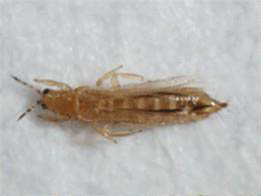Cotton Comments | April 30, 2024
Planting Considerations
As planting gets rolling across Oklahoma, there are several things to consider to set yourself up for a successful crop. Keeping an eye on the forecast to make sure the days following planting are conducive to good plant growth and stand establishment. Planting should be timed around days where the high temperature for the days following planting are in the low to mid 80s or higher and the overnight lows do not drop below 60. Check your local forecast for updated information. Be sure to keep an eye on soil temperatures as well. Greater than 65 degrees Fahrenheit is recommended for germination.
Figure 1. Mesonet 4-inch Soil Temperature for April 30, 2024.
Figure 2. Soil Temperatures for Altus.
Soil moisture is another big factor to consider when making planting decisions. Attempt to plant into a moist seedbed to achieve uniform emergence and stand establishment. It is better to plant into a moist seedbed rather than a dry seedbed and waiting for adequate moisture to initiate germination.
Soil moisture across the state is good with the exception of some areas in western Oklahoma and the panhandle.
Figure 3. Mesonet 1-day average 4-inch percent plant available water for April 29, 2024.
Figure 4. Mesonet 1-day average 16-inch percent plant available water for April 29, 2024.
For more information about planting considerations refer to the OSU Extension Fact sheet, PSS-2187.
Early Season Pest Considerations
Thrips are the biggest early-season pest concern for Oklahoma cotton production. Heavy thrips infestations can slow development for emerging plants and cause stand losses. Scouting fields from emergence to the five-leaf stage to monitor for thrips infestations is important to avoid losses. Be sure to monitor for thrips and damage caused by thrips (pictured below).
There are several options for thrips control currently available. Insecticidal seed
treatments are a good way to get some early-season protection. Over-the-top broadcast
applications may be needed as well. Several options are available including acephate,
Bidrin, and others. Thryvon cotton is a good tool for thrips control as well. If your
cotton has the Thryvon trait be sure to continue scouting but control measures may
not be justified.
Table 1. Thrips on cotton action thresholds from Texas A&M AgriLife Extension.
| Crop Stage | Action Threshold |
|---|---|
| 1 true leaf | 1 thrips per plant |
| 2 true leaves | 2 thrips per plant |
| 3 true leaves | 3 thrips per plant |
| 4 true leaves | 4 thrips per plant |
| 5-7 true leaves | Treatment is rarely justified |
Figure 5a. An adult Thrips. (Photo credit: Texas A&M AgriLife Extension)
Figure 5b. A larvae Thrips. (Photo credit: Texas A&M AgriLife Extension)
Figure 6. Thrips infestation. (Photo credit: Texas A&M AgriLife Extension)
Weather Update
Figure 7. U.S. Drought Monitor for Oklahoma on April 23, 2024.
Figure 8. Weather Update from the National Oceanic and Atmospheric Administration.









